|
"It is not clear whether any of the above proposed plans would have changed the history of Baltimore, but what is clear
is that access to Baltimore's downtown is difficult and mired with traffic hassles daily, and that the population
and tax base of Baltimore City is declining." - Terry Wikberg
Above quote is part of the fall out premise of highways through cities to make cities "better" and "more prosperous"
was actually believed. Preposterous.
"Why Paris Tore Down A Highway To Build A Tram" - Sensato (2024)
Today the trend is to tear down highways, and place public rail like trams, (streetcars). But it is important to know the
pain, and what else can be - innovative parks... to bring about healings goodness. Also important is, like Chicago and Boston,
that it takes much effort after learning about the initial government influencers that brought about the highways, to eliminate
the true void that was created.
Brief History of Chicago Expressways - The Flying Moose
Boston: "The Big Dig" Series - "The Big Dig Began With Activists Who Hated Highways" - GBH News (September 27, 2023) [Part
1: "We Were Wrong"]
Boston's Central Artery Removed - But Homes in China Town Still Don't Return: "The Big Dig Transformed Boston,; So Why do
the Controversies Define the Project?" - GBH News (November 15, 2023)
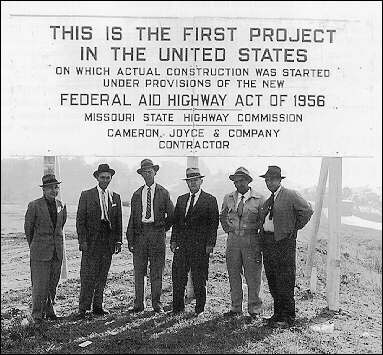
|
| Missouri Federal-Aid Highway Act of 1956. |
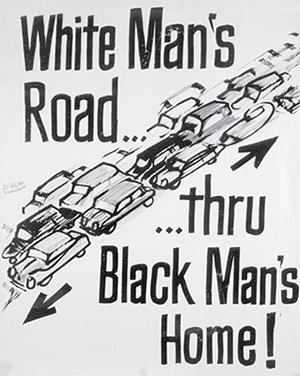
On This Page: Historic comprehension of Baltimore highways: especially Interstate 70 (changed to "Route 40" when
not fully "built"), destroyed homes, disengaged neighborhoods, destroyed our electric travel system - the streetcar,
and further segregated people by not only race, but class due to automobile. This page also explores creative wind and solar
art that is not only beautiful, but are powerful energy conductors, helping those highways and other roadways that stay.
Sensitive language due to era spoken and/or written.
"The more of them that are wiped out, the healthier Baltimore will be in the long run."
- Robert Moses, Architect of Highways, Bridges, and Neighborhood blocking
Yes. "Them" refers to Afro/African-Americans
BRIEF HISTORY OF GREATER BALTIMORE COMMITTEE:
Greater Baltimore Committee portrays itself, with 1955 name to cause confusion, making, fooling public to believe
that it is part of government, especially Baltimore City government. Prior to its Elkridge Lodge in Towson incorporation
(first chair being Jim Rouse), members were involved in 1940's bringing National City Lines, well-known racist Robert Moses
for highways and Henry Barnes to arrange Baltimore streets, especially creating one-way streets for the destruction of streetcars
after they so loved them to sell suburbia real estate, to move their products fast, destroy many neighborhoods, mostly black,
and to never receive their, and Lumbee families their homes back when portions were not built. When National City Lines was
deemed unconstitutional, in 1963, Greater Baltimore Committee decided that they will get rid of Baltimore Transit Company
(BTC) to become, "Metropolitan Transportation Authority" of which they lobbied that the State of Maryland own, destroying
once and for all streetcars, and wealth abound with General Motor busses and their tires. Not a single citizen got to vote
for this change - um, stealing. On April 30th, 1970, Baltimore City sold their public transportation system for $11 million
dollars to the State of Maryland. Greater Baltimore Committee has laid dormant in some years, but "Shadow Government"
none the less. Greater Baltimore Committee is a 501(c)4 lobbyist organization that, according to IRS, is confined to "Social
Welfare," not to the financial prosperity of its members.
"CBS Reports: Robert Moses - The Man Who Built New York" (1963)
Robert Moses' motto, "People over Principles."
Robert Moses reveals a shocking fact regarding his relationship with cars.
"Robert Caro on Robert Moses" - Randall's Island Park Alliance [Book: The Power Broker]
"Robert Moses: Racism By Design" - African American History is American History (AAHIAH) (Episode #49)
"Robert Moses, the Man Who Rebuilt New York" - "CBS Sunday Morning" (October 23rd, 2022)
"Road To Ruin: In the late 1960s, Baltimore began demolishing Black neighborhoods to make room for an ill-fated expressway.
Will the harm from the Highway to Nowhere ever be repaired?" - Baltimore Magazine (2023)
"Jones Falls Expressway: Historical Overview" - Roads
"In 1958, Baltimore mayor Thomas D'Alesandro, Jr. named Phillip Darling of the city's planning department. Darling saw
the threat posed by the construction of the Baltimore Beltway (I-695) in luring business out of the city, and thought
it was necessary that the city respond by building radial expressways to not only address the needs of commuters and
shippers, but also help the city retain and attract business.
After two years of study, Darling published the report, 'A Study for an East-West Expressway,' in 1960. The Darling plan maintained
the same radial axes as the Smith Report from 15 years earlier, but there were key changes to the plan that represented an
initial attempt to balance the needs of the business community with those of residents. All three radial expressways were
to have been eight lanes wide."
"But in West Baltimore, people weren't so lucky: A little piece of the planned network got built. When Harlem Park started
to fight the road-builders, the city-wide rebellion against the freeways was just beginning to coalesce. Without as much momentum
and militancy as the community groups that matured later, Giguere argues, the Harlem Park activists took a more accommodating
approach to the fight: 'Rather than protesting the road, the group elected to insure just compensation for those being displaced
from the area.' They didn't even get that much. The payments that residents received frequently were not enough to purchase
a new house elsewhere. But they still took the money and left - they had to, since their homes had been condemned - and the
area became a place of trash-filled, rat-attracting vacant lots and abandoned buildings, even before construction of the expressway
began."
"The Dumper Freeway"
"Move Up When You Move" - "A Residents Guide to Baltimore's Relocation Services" - Interstate Division for Baltimore City
and they won't, until you TELL them to!" ~ "Only 'We the People' can stop this madness"
Baltimore Early Expressway Planning - 1942
Reprinted resources from I-95 Harbor Crossing Corridor Study September 1970
"This city is your children's legacy. Don't leave it a paved and polluted waste-land. It is too priceless to be destroyed
to profit a few."
"Baltimore city taxpayers, who were never asked whether they wanted this road, will, through their property tax, pay
20% of the total cost. This road is estimated to cost over $2 Billion."
"THE ROAD" is the proposed 3A System - 28 miles of Interstate Highways through neighborhoods and parks and
historic districts of Baltimore city." I-70, I-170, I-83, I- 395, I-95 [Seek map for locations]
"347% more fuel is required to move a ton of goods in heavy trucks than is required to move the same goods by rail.
Freeways provide an enormous subsidy to encourage truck shipments and discourage the inherently more efficient rail shipments.
The squandering of fossil fuels caused the Director of the U.S. Geological Survey to state: 'In the United States, we have
used more mineral fuels during the last 30 years than all the people of the world used previously. This enormous consumption
will have to be doubled just to meet the needs of the people now living in the United States through the remainder of their
lifetimes.'"
"The spreading of a ton of salt per mile of freeway whenever icing conditions exist is found to exacerbate this problem.
The hydrocarbon and lead residues associated with water rub-off have not even been evaluated."
CONGESTION MITIGATION AND AIR QUALITY IMPROVEMENT PROGRAM (CMAQ)
"Implemented to support surface transportation projects and other related efforts that contribute air quality improvements
and provide congestion relief. The CMAQ program allocates federal funding for infrastructure projects that reduce
congestion and improve air quality. Bicycle transportation and pedestrian walkways are eligible uses of the money,
and can be designed to include green infrastructure features, such as permeable surfaces for trails, and bio-swales and
bioretention for areas adjacent to trail surfaces."
FIXING AMERICA'S SURFACE TRANSPORTATION ACT (FAST ACT)
"Program goals are to improve the safety, efficiency, and reliability of the movement of freight and people; generate
national or regional economic benefits and an increase in global economic competitiveness of the U.S.; reduce highway
congestion and bottlenecks; improve connectivity between modes of freight transportation: enhance the resiliency
of critical highway infrastructure and help protect the environment; improve roadways vital to national energy
security; and address the impact of population growth on the movement of people and freight."
DEFENSE ACCESS ROAD PROGRAM (DARP)
Since 1919 the Department of Defense (DOD) and predecessors of the Federal Highway Administration (FHWA) have
cooperated in ensuring the needs of the military are considered in the nations Federal-aid Highway Program. The Defense
Access Road (DAR) Program provides a means for the military to pay their share of the cost of public highway improvements
necessary to mitigate an unusual impact of a defense activity. An unusual impact could be a significant increase
in personnel at a military installation, relocation of an access gate, or the deployment of an oversized or overweight
military vehicle or transporter unit."
TRANSPORTATION INVESTMENT GENERATING ECONOMIC RECOVERY (TIGER Grants)
The Transportation Investment Generating Economic Recovery, or TIGER Discretionary Grant program, provides for the DOT to
invest in road, rail, transit, and port projects that promise to achieve national objectives. The eligibility
requirements of TIGER allow project sponsors at the State and local levels to obtain funding for multi-modal, multi-jurisdictional
projects that are more difficult to support through traditional DOT programs."
TRAFFIC SYSTEMS MANAGEMENT AND OPERATIONS (TSMO) "An integrated approach to addressing traffic needs within a regional area.
It is designed to optimize the performance of traffic operations using existing infrastructure through implementation
of multi-modal, cross-jurisdictional systems, services, and projects. The application of TSMO can help to preserve
capacity and improve security, safety, and reliability of a transportation system.
TRANSPORTATION ALTERNATIVES PROGRAM (TAP)
As part of the Federal Highway Administration Surface Transportation Program, the Transportation Alternatives Program (TAP)
is a reimbursable federal aid funding program for transportation related community projects designed to enhance the cultural,
aesthetic, historic, and environmental aspects of an intermodal transportation system. The program can assist in funding
projects that create bicycle and pedestrian facilities, restore historic transportation buildings..."
"It’s not just the condition of the roads themselves that led to Maryland’s low score but also the levels of congestion.
Urban portions of Maryland’s Interstate system are among the most congested in the nation. Ongoing routine maintenance
is not going to be adequate to maintain this aging system." Rocky Moretti, TRIP’s policy and research
director
According to the report, Maryland’s urban interstates are the second-most congested in the U.S., behind only
California. The interstates are the “workhorses” of the state’s highway network, carrying 30 percent
of the state’s vehicle travel.
'Driving during rush hour can be a struggle. You get in rush hour traffic coming into Baltimore on either side, it’s
just a fight.' Henderson said.
The report also found that more than half of Maryland’s bridges are over 50 years old, though just two percent are
considered to be in poor or structurally deficient condition.
FEDERAL STATISTICS: PEOPLE IM TIRED VEHICLES KILL THE MOST ON HIGHWAYS: Statistics go up and down, though trend down 2015
- up.... Pedestrian and Bicyclist deaths continue to trend up. Busses injure 68%. Rail has least "accidental"
deaths, mainly suicides.
Status of the Nation's Highways, Bridges, and Transit - Federal Highway Administration
"The Big Dig: An Unending Stream of Mishaps" - Mega Projects
"Why Are We Still Widening highways in U.S. cities?" - City Beautiful [Civics-Oriented]
"Manufacturers depend on the roads, bridges, and highways in rural America to supply the equipment our economy relies
on, and that infrastructure is in desperate need of repair and modernization."
"News Release: U.S. Rural Roads & Bridges Have Significant Deficiencies & High Fatality Rates" - A National Transportation
Research Nonprofit
"Hey farmer, farmer, put away your DDT
I don't care about spots on my apples
Leave me the birds and the bees
Please
They took all the trees, and put em in a tree museum
And they charged the people a dollar and a half to see them
No, no, no
Don't it always seem to go
That you don't know what you got 'til it's gone
They paved paradise and put up a parking lot"
"No Parking Here" - Bugs Bunny Against Freeway (1954)
PRESIDENT BIDEN BELOW OFFERS CASE FOR WORLD-CLASS TRANSPORTATION IN FORM OF A RECONCILIATION: DEDICATED LANE FREE STREETCARS
SERVING EACH CITY STREET RETURN RESPECT, COMFORT, and SCHEDULE-ON-TIME TRUST. THE SUBURBS GOT THEIR SUBWAY AND LIGHTRAIL TO
GET TO BALTIMORE. NOW WE NEED TO BE ABLE TO GET AROUND IN OUR OWN AND ADJACENT NEIGHBORHOODS
"The creation of the Interstate Highway System, funded and constructed by the federal government and state governments in
the 20th century, disproportionately burdened many historically Black and low-income neighborhoods in many American
cities. Many urban interstate highways were deliberately built to pass through Black neighborhoods, often requiring
the destruction of housing and other local institutions. To this day, many Black neighborhoods are disconnected from
access to high-quality housing, jobs, public transit, and other resources.
The federal government must recognize and acknowledge its role in systematically declining to invest in communities of color
and preventing residents of those communities from accessing the same services and resources as their white counterparts.
The effects of these policy decisions continue to be felt today, as racial inequality still permeates land-use patterns
in most U.S. cities and virtually all aspects of housing markets." - President Biden
"Why America Is Tearing Down Its Highways" - The B1M
"What Happens After a City Removes a Freeway?" - City Beautiful
"The Price is Right" - August 21, 1958 Concrete Contestant
The 3A Expressway System
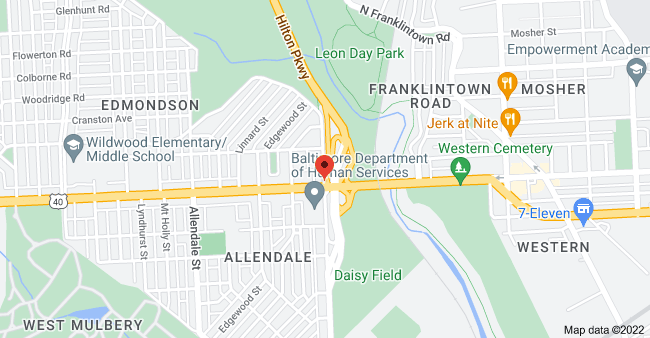
|
| BALTIMORE |
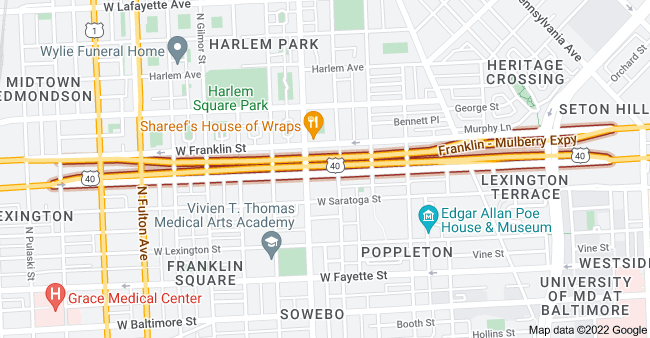
|
| BALTIMORE |
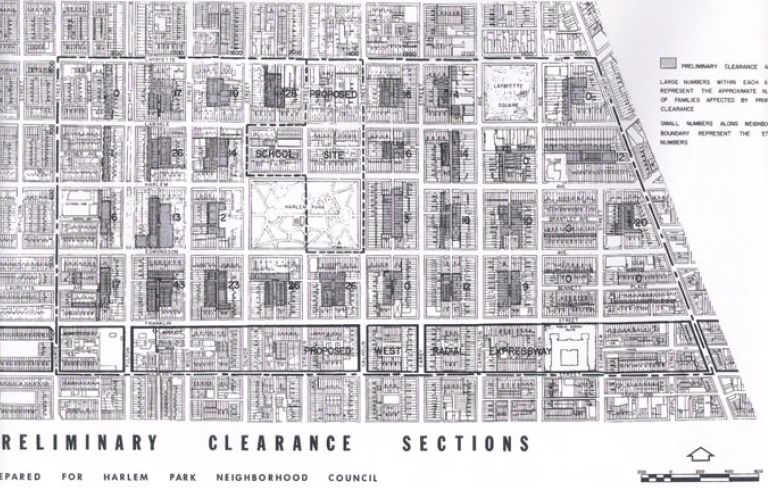
|
| 400 BLOCK "CLEARANCE" PLAN |
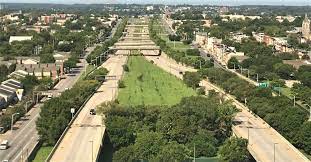
|
| FACING WEST |
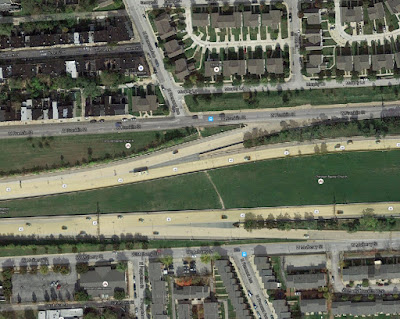
|
| FACING NORTH |
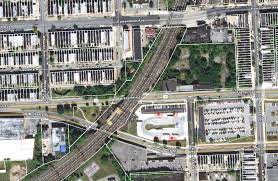
|
| WEST BALTIMORE MARC TRAIN STATION - PARKING ADDED 2010-11 |
........................................................................................................................................................................................................................................................................................................................................................................................................................................................................................................................
| WIND CATCHER TURBINE TREES - PARIS |
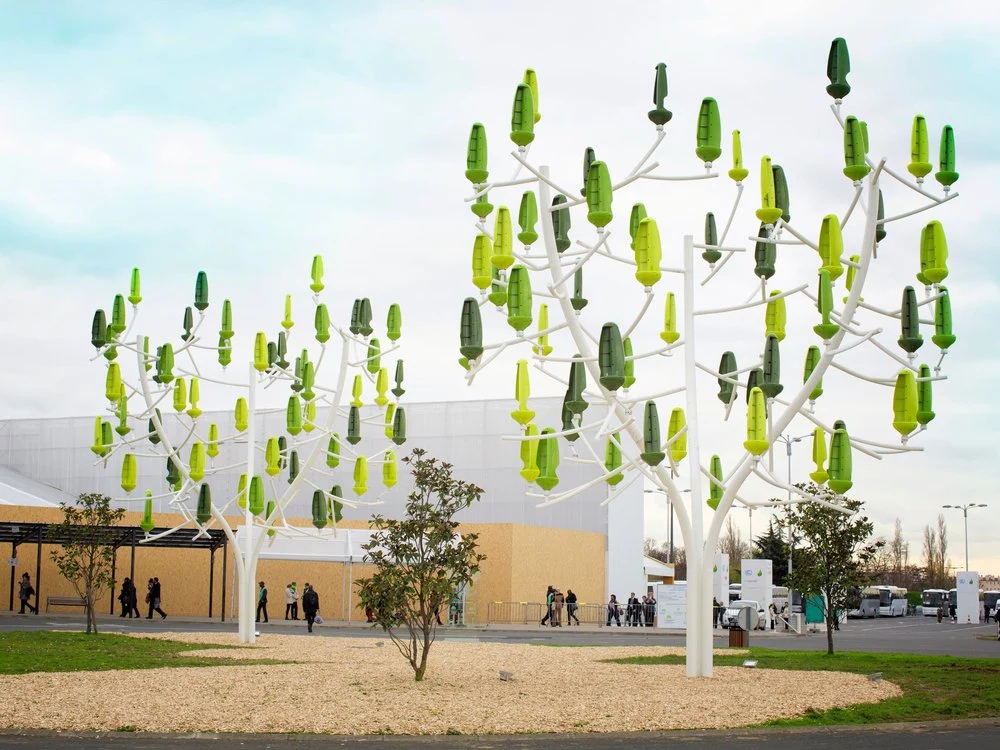
|
| PARIS WIND TURBINE TREE: POWERS 1 US HOUSE FOR 4 MONTHS OR LIGHTS 71 PARKING SPACES |
| GEOTHERMAL SYSTEM BELOW PARK: HEATING & COOLING |
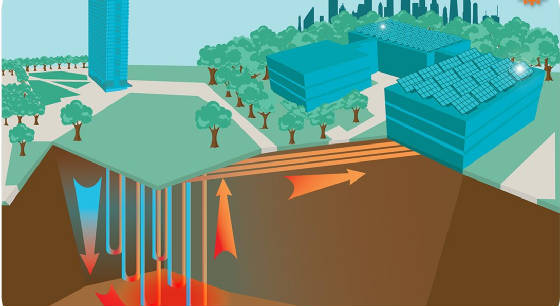
|
| PLANNING SUSTAINABILITY& PROJECT MANAGEMENT - UNIVERSITY OF ILLINOIS |
..................................................................................................................................................................................................................................................................................................................................................................................................................................................................................................................................
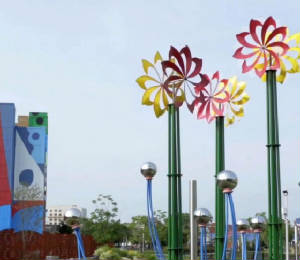
|
| Maryland |
| "ROTOR" Savonius VERTICAL AXIS WIND TURBINES |
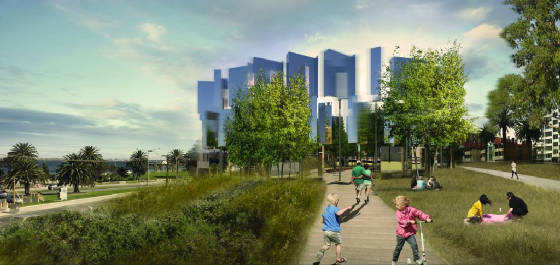
|
| 105 MWh of clean energy annually = powers 21 homes. Port Phillip, Australia |
| Wind Solar Swings |

|
| WIND SOLAR SWINGS |
........................................................................................................................................................................................................................................................................................................................................................................................................................................................................................................................
| WIND TURBINE TUNNELS |
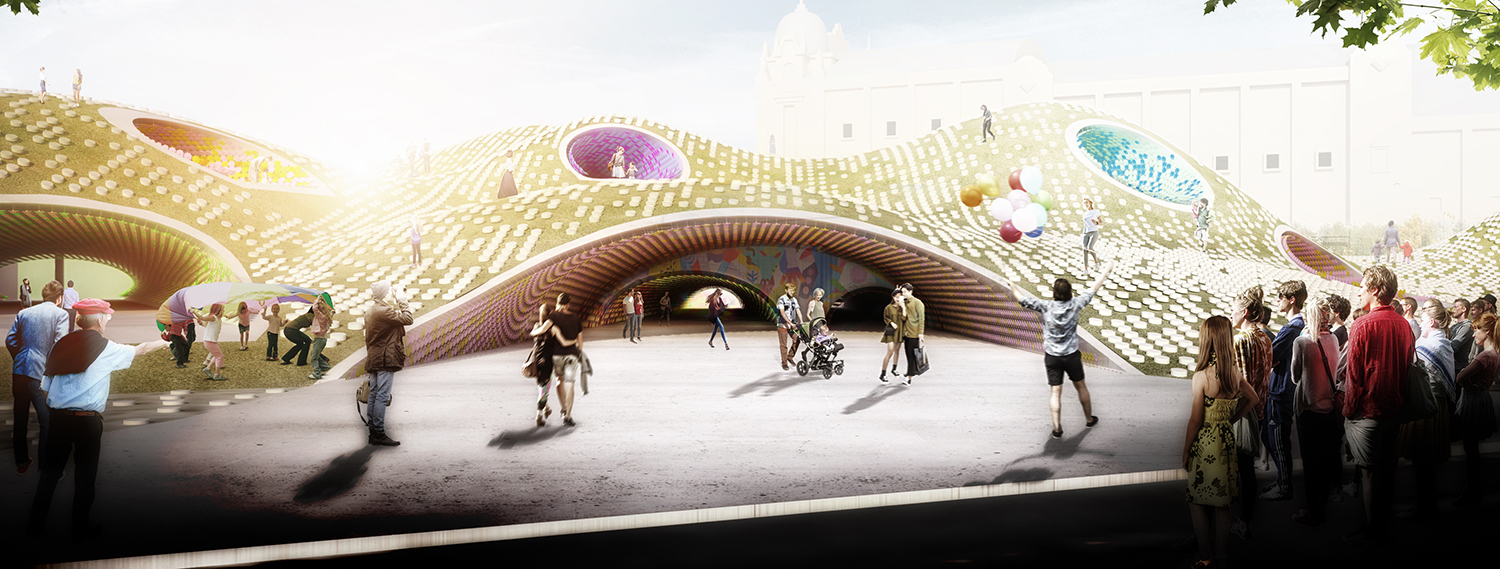
|
| UNDULATING WIND TUNNELS USE THOUSANDS OF TINY TURBINES TO POWER 200 HOMES - PORT PHILLIP, AUSTRALIA |
.........................................................................................................................................................................................................................................................................................................................................................................................................................................................................................................................
Creative wind and solar art that is not only beautiful, but powerful energy conductor will help those highways that stay.
|
